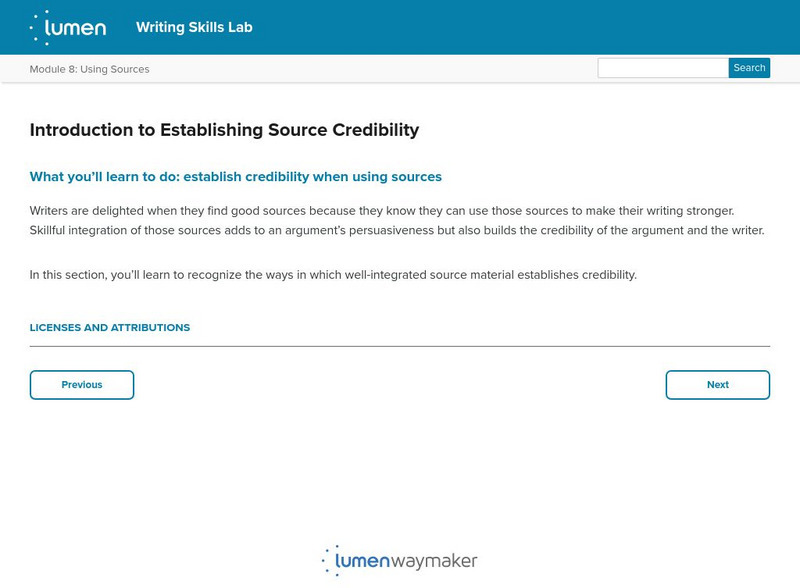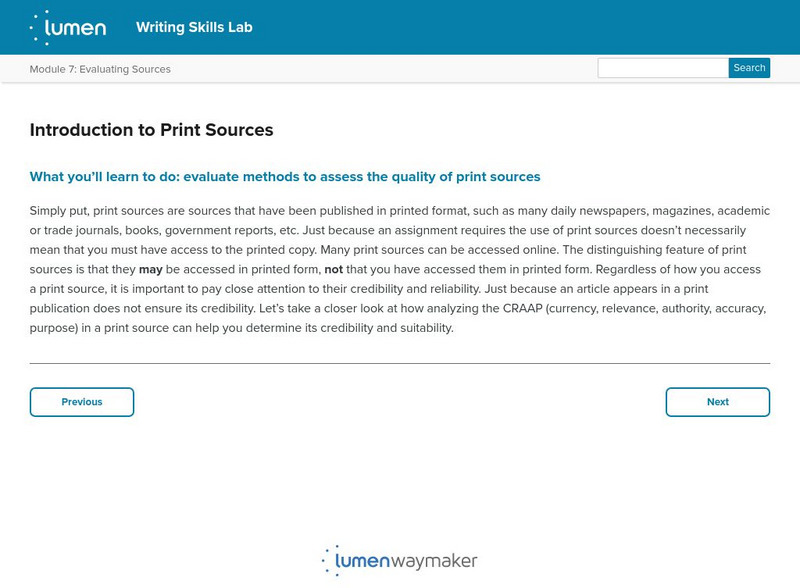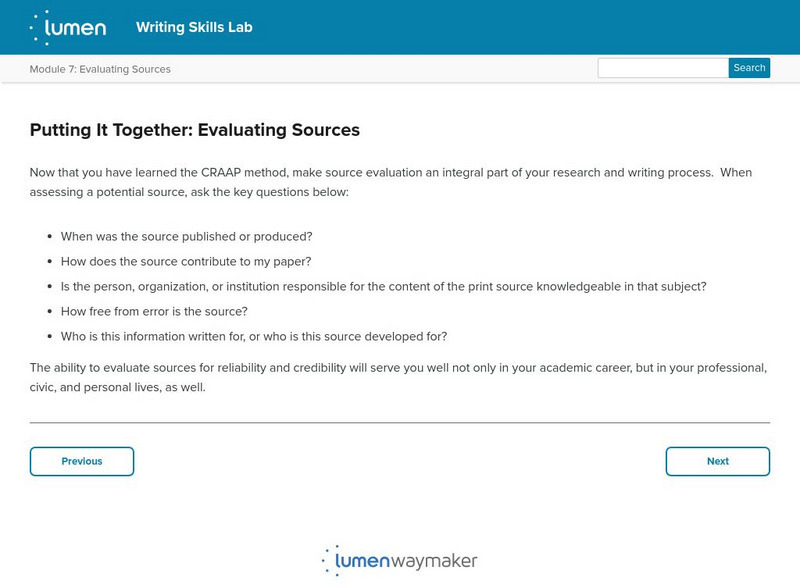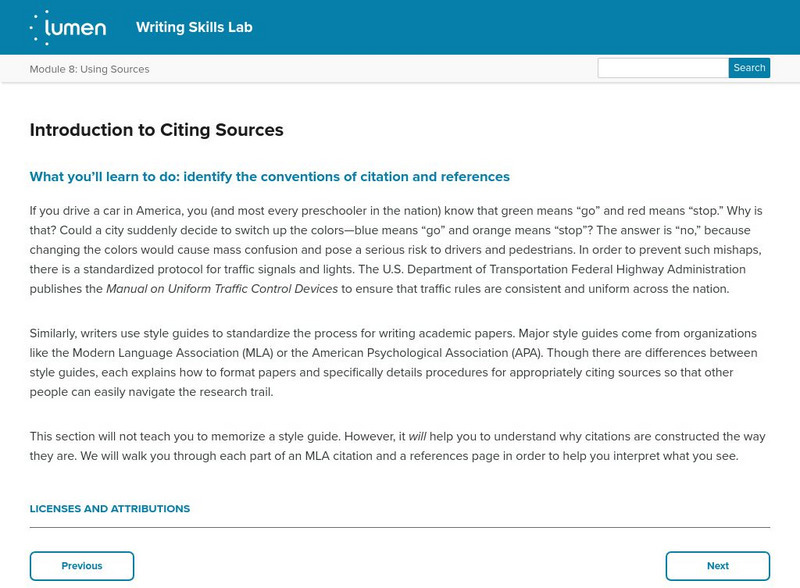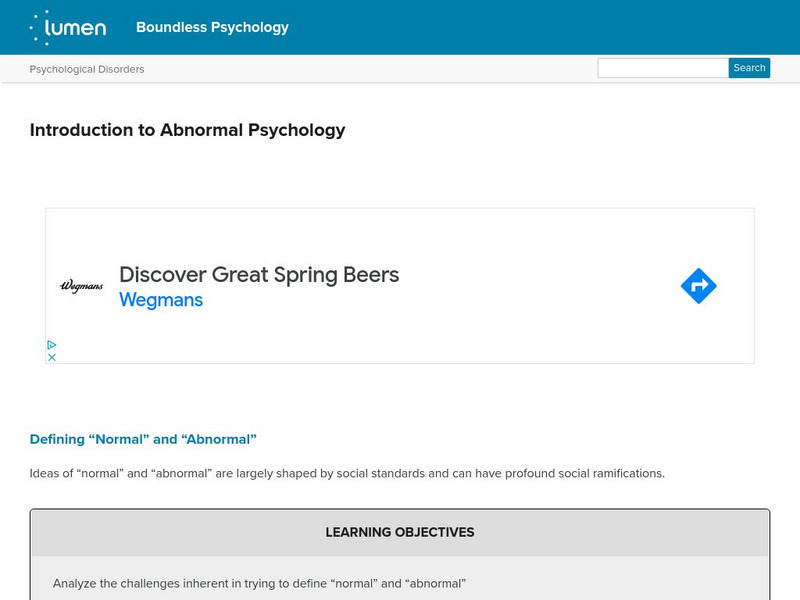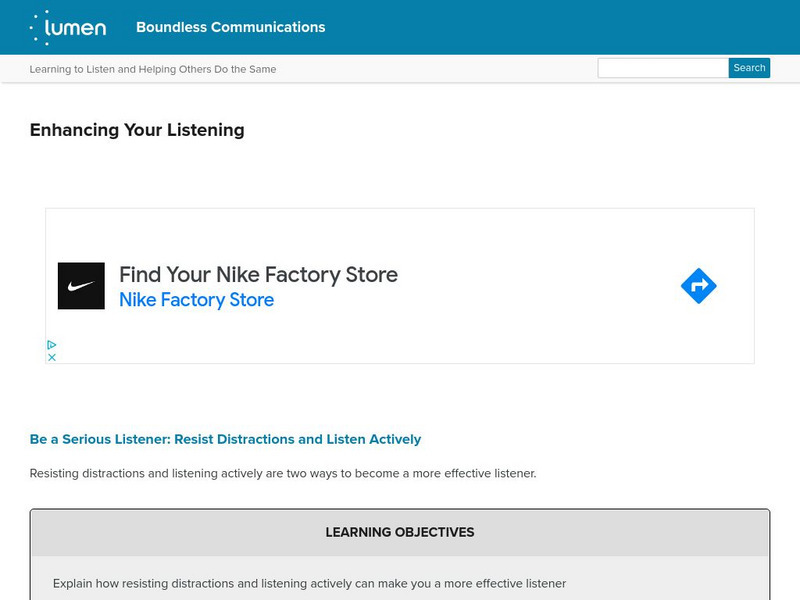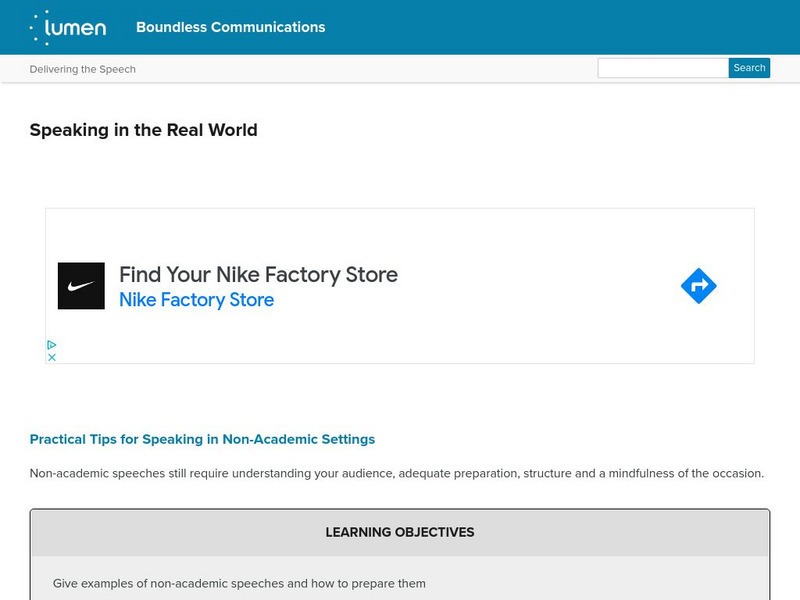Hi, what do you want to do?
Lumen Learning
Lumen: Using Databases: Periodical Indexes and Abstracts
This lesson plan focuses on using databases: periodical indexes and abstracts including the differences between periodical and journals, selecting the right number of keywords, and full-text databases.
Lumen Learning
Lumen: Finding and Evaluating Research Sources
This lesson focuses on how to find, evaluate, and use primary and secondary sources using printed and online sources. It provides practice writing activities such as examining the same topic through primary and secondary sources and...
Lumen Learning
Lumen: Writing About Literature: Finding Literary Criticism
This article focuses on how to find literary criticism including scholarly journals, citations from other works, a list of useful links to find sources, and TAMU libraries' website.
Lumen Learning
Lumen: Using Modern Language Association (Mla) Style
This lesson focuses on using Modern Language Association (MLA) Style including the major components of a research paper written using MLA style, reasons to use MLA Style, formatting an MLA paper, general MLA guidelines, a comparison of...
Lumen Learning
Lumen: Reading and Interpreting Literary Texts: How to Analyze a Short Story
This lesson focuses on analyzing a short story including all of the elements of a short story such as setting, plot and structure, and characterization.
Lumen Learning
Lumen: Multimodality: The Five Modes of Communication
This instructional activity focuses on the five modes of communication: visual, linguistic, spatial, aural, and gestural along with examples of each.
Lumen Learning
Lumen: Examples of Multimodal Texts
This lesson focuses on providing examples of multimodal texts, those using more than one mode of communication in the same text.
Lumen Learning
Lumen: What Are Remediation and Remix?
This lesson focuses on remediation and its definition and forms of remediation with examples. It also provides a practice exercise.
Lumen Learning
Lumen: Critical Reading: Supporting Claims
This activity focuses on supporting claims including the distinction between main ideas and supporting details, relationship between purpose and supporting details, sufficient and related support, and support and elaboration. W.9-10.1a...
Lumen Learning
Lumen: Using Sources: Introduction to Establishing Source Credibility
This is an introduction to establishing credibility by using appropriate integration of source material. Click on the Next button at the bottom right to get to more information about how to establish credibility through integration....
Lumen Learning
Lumen: Writing Skills: Introduction to Effective Introductions and Conclusions
This article provides an introduction to identifying strategies for writing effective introductions and conclusions. Click next on the bottom right to continue.
Lumen Learning
Lumen: Academic Argument: Introduction to Argumentative Thesis Statements
This introduction focuses on evaluating argumentative thesis statements. Click on the Next link at the bottom right for more information.
Lumen Learning
Lumen: Academic Argument: Logical Fallacies
This introduction defines logical fallacies and lists reasons to avoid them. Click next at the bottom of each page for more information about fallacies.
Lumen Learning
Lumen: Evaluating Sources: Introduction to Print Sources
This is an introduction to evaluate methods to assess the quality of print sources such as daily newspapers, magazines, academic or trade journals, books, government reports, etc.
Lumen Learning
Lumen: Evaluating Sources: Putting It Together: Evaluating Sources
This is a summary of evaluating sources using the CAARP analysis method including questions to ask yourself about each source. W.9-10.8 Sources
Lumen Learning
Lumen: Using Sources: Introduction to Citing Sources
This is an introduction to citing sources and used in your paper. It includes the need to choose the proper method of citation based on the field of study: Modern Language Association (MLA) or the American Psychological Association (APA).
Lumen Learning
Lumen: Multimodality: Putting It Together: Multimodality
This is a summary of the lessons on multimodality including the relationship between media and modes, the five modes of communication, multimodal texts, remediation, remix, and attribution.
Lumen Learning
Lumen: Boundless Communications: Credibility Appeals
In this Boundless Communication, students will learn about the importance of credibility in public speaking. There are four sections: defining credibility, types and elements of credibility, building credibility, and ethical usage....
Lumen Learning
Lumen: Boundless Communications: Introduction
In this section of a textbook, students learn different techniques for writing an introduction. It provides links to information on the following topics: the role of an introduction, getting attention and interest, establishing...
Lumen Learning
Lumen: Boundless Communications: Conclusion
In this section of a textbook, students learn how to develop and facilitate an effective closing to a speech. It includes links to the following topics: the role of a conclusion, summarizing ideas, and signaling the end of the speech and...
Lumen Learning
Lumen: Boundless Psychology: Introduction to Abnormal Psychology
This learning module looks at how normal behavior is defined and perceived by society. The definitions of normal behavior shifts as societal norms change over time. The Diagnostic and Statistical Manual of Mental Disorders (DSM) is a...
Lumen Learning
Lumen: Boundless Communications: Enhancing Your Listening
In this Boundless Communication students will learn the importance of being an active listener who can resist distractions and keep an open mind while suspending judgment and exercising empathy. SL.9-10.3 Eval Presentation, SL.9-10.3...
Lumen Learning
Lumen: Boundless Communications: Contextual Factors to Consider
In this Boundless Communication presentation, students will learn about contexts to consider when preparing a speech including physical, the psychology of audience, audience opinion of you and topic, and audience knowledge of the topic.
Lumen Learning
Lumen: Boundless Communications: Speaking in the Real World
Students will learn practical tips for speaking in non-academic settings. SL.9-10.6 Adapt to task/formal. CSS.ELA-Literacy.CCRA.SL.6














